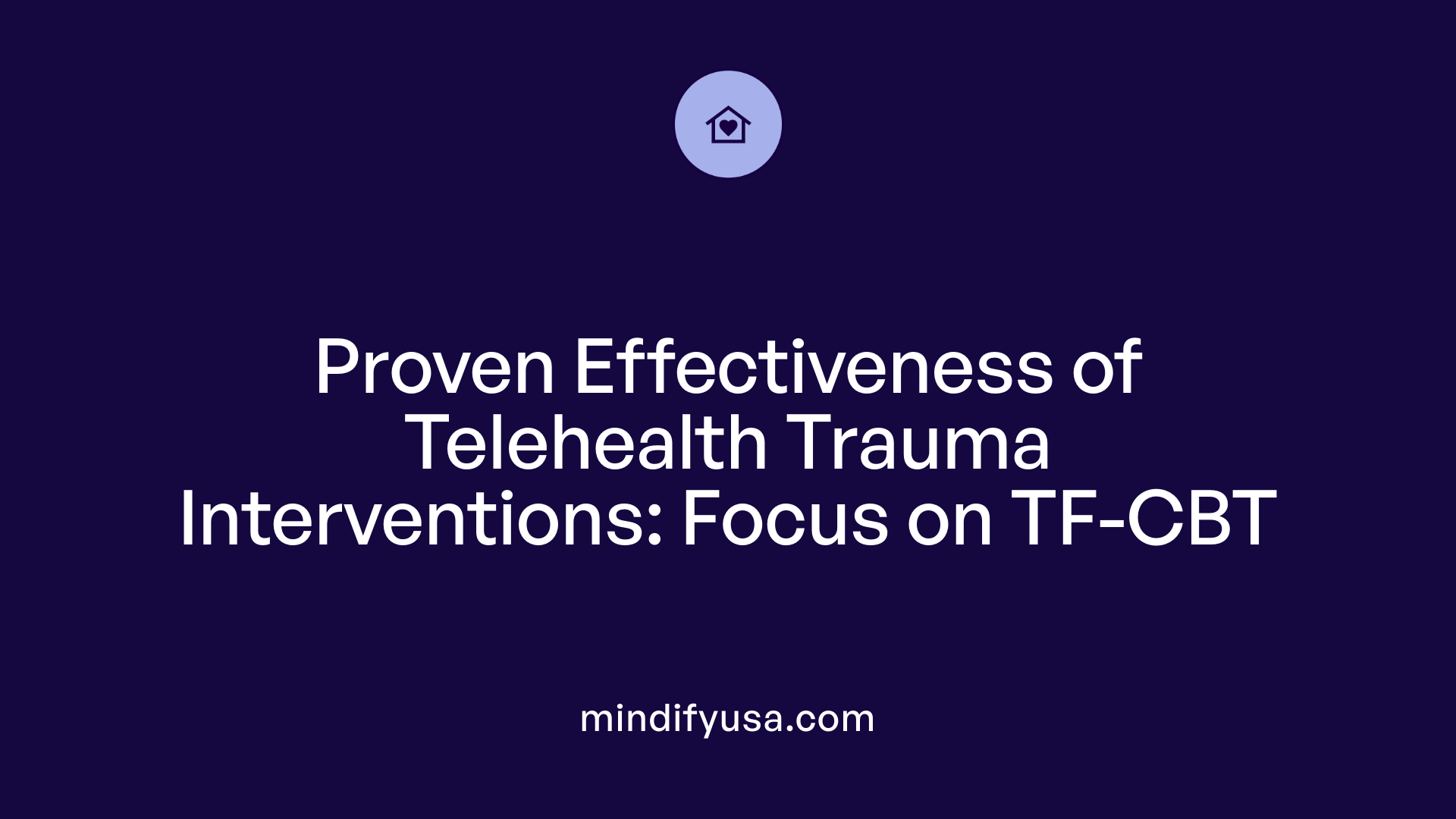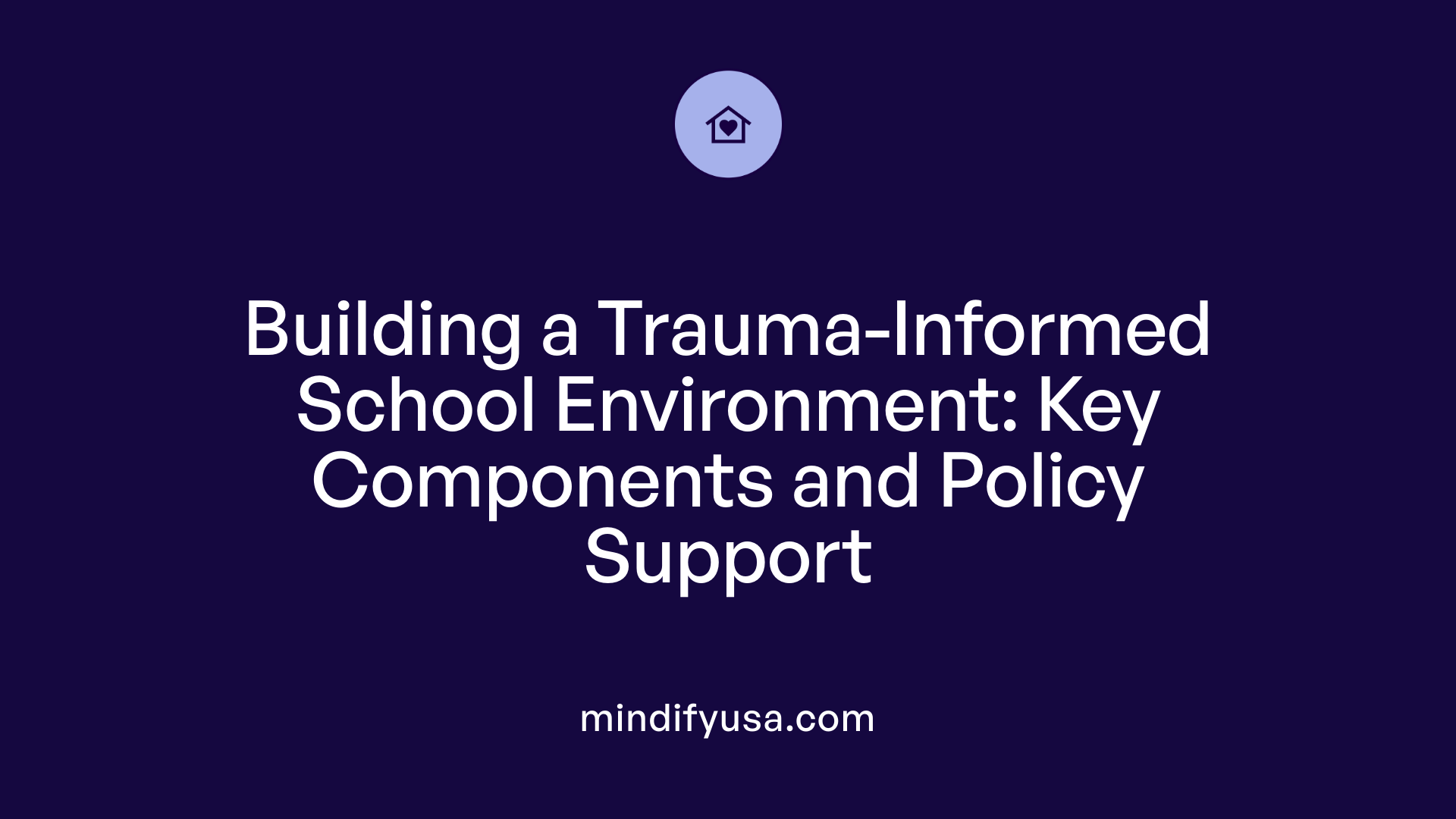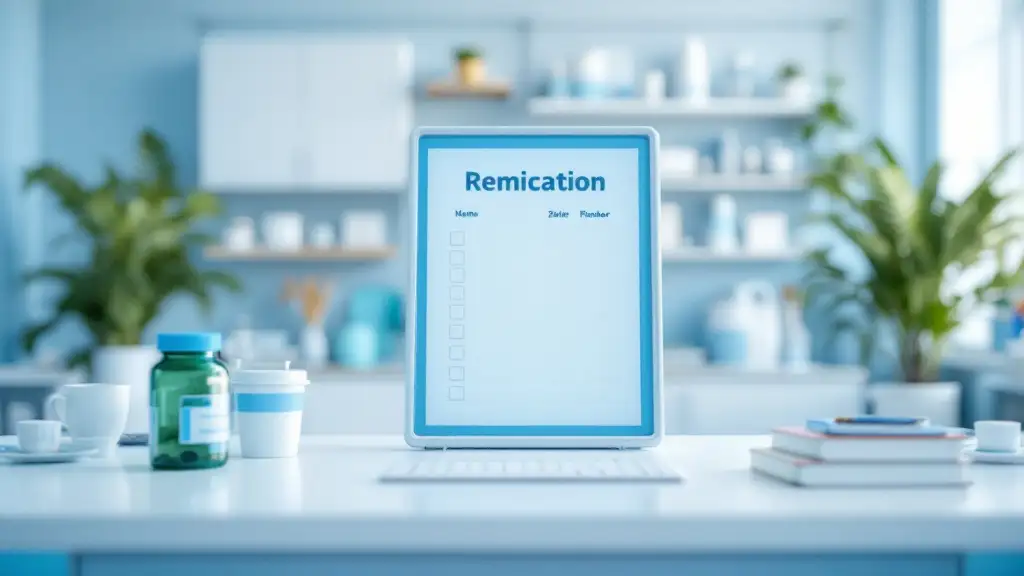Revolutionizing Trauma Support in Educational Environments
The emergence of telehealth as a primary modality in school mental health services offers promising avenues for addressing trauma among children and adolescents. With the increasing demand for mental health support, especially exacerbated by the COVID-19 pandemic, teletherapy provides a flexible, accessible, and effective solution. This article explores how telehealth can expand access to trauma care, reviews evidence-based interventions, discusses implementation strategies, and highlights best practices and policies that foster trauma-informed educational settings.
Principles of Trauma-Informed Systems in Telehealth Contexts
How can telehealth expand access to mental health support for students in schools?
Telehealth has become a vital tool in increasing access to mental health services within educational settings. During the past few years, especially amid the COVID-19 pandemic, it has proven to be a scalable solution to overcome many longstanding barriers.
One of its primary advantages is flexibility. Telehealth enables students to receive support both at school and at home, accommodating different schedules and reducing the need for transportation. This flexibility is particularly beneficial for students in rural or underserved communities who might otherwise face difficulties accessing in-person therapy.
Moreover, telehealth facilitates collaboration among school staff, families, and community resources. It allows mental health providers to work closely with teachers and caregivers, thereby fostering a more integrated support system tailored to each student's unique needs.
The technology-driven approach also diminishes stigma associated with seeking mental health care, as students can participate privately from familiar environments. This privacy encourages more students to seek help early.
Several initiatives have demonstrated success in expanding access through school-based telehealth programs. These initiatives often include services offered in multiple languages and are integrated with broader community health efforts, which improve cultural responsiveness and reduce disparities.
Statistics show that most public schools now offer at least some form of mental health support, with a growing number implementing telehealth solutions. For example, many districts have signed multi-million-dollar contracts with telehealth companies, expanding their reach to thousands of students.
In sum, telehealth provides a practical, sustainable way to meet the rising mental health needs of students. It complements traditional services and is especially effective in bridging gaps for vulnerable populations, ensuring that more children and adolescents receive timely, appropriate support for trauma and emotional well-being.
Understanding stress and trauma as fundamental principles
A core aspect of trauma-informed systems is understanding how stress and trauma impact children and adolescents. Recognizing this influence is crucial for designing effective interventions. Stress can activate the body's
Trauma Repair Principles and Techniques in Telehealth Settings

How is Perry’s Three R’s Model applied in virtual environments?
Perry’s (2003) Three R’s Model — regulate, relate, and reason — provides a helpful framework for trauma repair in telehealth sessions with children and adolescents. The approach emphasizes starting with regulation— helping the child regain feelings of safety and calm through bottom-up strategies like breathing and grounding. Once the child is regulated, clinicians foster relational connection by creating a safe, supportive virtual space using toys, arts, and collaboration with parents. The final step involves reasoning, where therapists guide children through talk therapy, cognitive restructuring, and insight-focused interventions.
In virtual settings, this model translates into specific techniques such as digital sensory rooms or mindfulness apps to help regulate, engaging expressive arts through screen sharing, and facilitating caregiver involvement to strengthen the relating phase. This structured approach helps build resilience and supports trauma recovery effectively over telehealth.
What are some somatic management techniques suitable for telehealth?
Children and adolescents dealing with trauma often require somatic management techniques that foster regulation, which can be adapted successfully for telehealth delivery. These include:
- Breathing retraining exercises that can be guided through visual cues or apps.
- Relaxation strategies and visualization practices to promote calmness.
- Grounding exercises such as holding onto physical objects or noticing sensory inputs.
- Movement-based activities and mindfulness practices that can be performed in small spaces.
- Establishing personal rituals, like daily routines or calming songs, to reinforce a sense of safety.
These techniques facilitate the “Regulate” phase of Perry’s model, helping traumatized youth to regain control over their physical and emotional states even when sessions are conducted remotely.
How do digital tools enhance regulation during telehealth sessions?
Digital tools have expanded the possibilities for calming and regulation in telehealth. Virtual sensory rooms, created through platforms that simulate calming environments, provide safe spaces for children to self-regulate during or between sessions.
Mindfulness and emotion literacy apps — such as Liberate, Happify, Calm, and Atlas of Emotions — allow children to practice breathing exercises, mindfulness, and emotional awareness skills independently.
For example, virtual calming rooms can incorporate visual and auditory stimuli tailored to each child’s needs. Apps help children learn skills like recognizing and labeling emotions, which is vital for trauma recovery.
The integration of these digital tools creates an engaging, flexible ecosystem that supports regulation, enhances therapy engagement, and fosters resilience outside of direct clinician involvement.
How is “Relate” fostered in telehealth interventions?
Building relationships in virtual therapy involves creating a caring environment and collaborating closely with families. Clinicians prepare the virtual space with familiar toys, expressive arts supplies, and games to facilitate connection.
Working with parents is essential for reinforcing regulation strategies at home, which strengthens the “Relate” phase. It also includes sharing visual aids or digital resources during sessions to increase engagement.
Non-verbal expressive arts, such as virtual art therapy, play sessions, sandtray platforms, and music or puppet play, are used to deepen emotional connection and facilitate communication when words are difficult.
Engagement is further supported by consistent sessions, clear boundaries, and culturally responsive practices that recognize each child’s background and preferences.
What therapies promote reasoning about trauma in telehealth?
Once regulation and relationship are established, the
Evidence Supporting the Effectiveness of School-Based Telehealth Trauma Therapy

How effective is trauma-focused cognitive behavioral therapy (TF-CBT) delivered via telehealth?
Research indicates that TF-CBT provided through telehealth platforms is highly effective in alleviating trauma-related symptoms in children and adolescents. A notable multiple case study focused on delivering culturally tailored TF-CBT to African American youth in a school setting. Results from this study revealed significant improvements, with all participants experiencing a decrease in PTSD symptoms to nonclinical levels after completing treatment.
Participants in the study attended an average of 14 weekly sessions, within the typical range of 12 to 20 sessions for TF-CBT. The intervention was adapted for virtual delivery, utilizing digital worksheets, screen sharing, and working in parallel sessions with caregivers, which reinforced skills learned during therapy.
Importantly, none of the participants met the diagnostic criteria for PTSD or adjustment disorder post-treatment, demonstrating the intervention's substantial impact. The study also highlighted high engagement, with all participants completing the therapy process without dropping out. These results underscore that telehealth-delivered TF-CBT can be a feasible and accessible alternative to traditional in-person therapy, effectively addressing barriers faced by underserved populations.
Furthermore, these positive findings are supported by other research indicating the broad applicability of telehealth trauma interventions. The flexibility of digital formats facilitates delivery in school settings and remote areas, making trauma-focused care more accessible. Such evidence has encouraged many school systems and clinics to adopt telehealth models, aiming to increase therapeutic reach, especially among minority and rural youth who might otherwise face obstacles like transportation or scheduling conflicts.
By integrating culturally sensitive practices into telehealth services, clinicians can better meet the unique needs of diverse populations. Overall, the accumulated data affirm that telehealth TF-CBT is not only effective but also well-received by youth and their families, fostering better engagement and outcomes.
Implementation Strategies and Guidelines for School-Based Telehealth

What are best practices for delivering trauma-focused therapy via telehealth in schools?
Implementing trauma-focused therapy through telehealth in school settings requires thoughtful planning and adherence to specific best practices. An essential first step is choosing user-friendly, secure platforms that prioritize privacy and confidentiality for all participants. These platforms should be compliant with health information privacy laws, such as HIPAA, to safeguard sensitive information.
Scheduling shorter, more frequent sessions helps maintain engagement and reduces fatigue for children and adolescents who are often more comfortable with digital interactions. Incorporating interactive tools like digital worksheets, virtual art supplies, and movement activities can foster active participation and make sessions more dynamic.
Creating a safe and private environment at both the school site and at home is crucial. This might involve designated quiet spaces for therapy sessions equipped with headphones and privacy screens, ensuring that sessions are discreet and free from interruptions.
Family involvement plays a vital role in telehealth therapy. Educating caregivers about safety procedures, emergency contacts, and ways they can support their child's emotional regulation at home enhances treatment outcomes. Engaging families through parallel sessions or digital communication fosters a collaborative approach.
Given the trauma focus, integrating trauma-informed techniques adapted for virtual environments significantly increases engagement and effectiveness. Techniques such as art therapy, play therapy, and body-awareness exercises, modified for online use, help children process their emotions safely.
Proactive technical management is also a best practice. Regular pre-therapy testing of equipment and internet connections minimizes disruptions. Addressing common technical issues beforehand—such as login difficulties or poor connectivity—ensures sessions proceed smoothly.
Finally, collaboration with school staff and caregivers enhances consistency and reinforcement of skills outside therapy sessions. Teachers and parents can be equipped to recognize signs of distress and support regulation strategies, fostering a supportive environment conducive to healing.
In summary, effective telehealth trauma therapy in schools hinges on secure technology, engaging and trauma-informed practices, privacy safeguards, and active family collaboration. These strategies together help overcome barriers and create a therapeutic environment that supports children and adolescents in their healing journey.
Policy and Infrastructure Supporting School Telehealth Services

What policies and barriers exist around implementing telehealth-based trauma mental health services in schools?
The expansion of telehealth services within educational settings hinges on a complex landscape of policies, funding arrangements, and logistical considerations. Recent legislation such as the American Rescue Plan and the Bipartisan Safer Communities Act has played a pivotal role in promoting mental health initiatives, including teletherapy, by channeling funding and incentives to schools and health providers.
These laws aim to address longstanding disparities by increasing access for underserved populations, especially in rural and low-income areas. For example, the American Rescue Plan allocated significant resources to bolster behavioral health services, with a portion designated specifically for school-based efforts.
However, several barriers persist, complicating the widespread implementation of trauma-informed telehealth in schools. A primary obstacle is the shortage of qualified mental health providers trained to deliver appropriate trauma-focused care remotely. Additionally, technological infrastructure remains uneven, with many schools lacking reliable high-speed internet or sufficient devices for all students.
Reimbursement policies also pose challenges. While some insurance providers and Medicaid programs now cover telehealth services, inconsistencies and limitations in billing practices can deter school districts and clinics from fully embracing teletherapy models.
Logistically, engaging students and their families in virtual sessions requires dedicated training and outreach. Concerns around privacy, especially in crowded or shared home environments, further complicate confidentiality.
To create sustainable telehealth programs, targeted policy reforms are needed. These include standardizing reimbursement policies, expanding provider training initiatives, and investing in technological infrastructure. Increasing funding through federal and state grants, along with developing clear guidelines for privacy and licensing, will enhance the framing for equitable access.
Finally, fostering collaborations among schools, healthcare providers, policymakers, and community organizations is essential. Such partnerships can promote capacity building and ensure that trauma-informed telehealth services are both accessible and sustainable in diverse educational settings.
Creating a Trauma-Informed School Environment and Leveraging Policy for Better Support

What are the essential components needed to establish a trauma-informed school environment?
A trauma-informed school environment is built on a multi-layered framework that prioritizes safety, trust, resilience, and inclusivity. It begins with comprehensive staff training to increase understanding of trauma’s impacts on learning, behavior, and emotional well-being. Educators and school staff learn strategies to create predictable routines, emotional regulation, and safe spaces within classrooms, which help students feel protected and supported.
Organizational policies also play a crucial role. Schools adopt policies that promote social-emotional learning (SEL), cultural responsiveness, and anti-bullying initiatives. These policies encourage practices that acknowledge students' backgrounds and trauma histories, fostering a sense of belonging and equity.
Partnerships with families, community organizations, and mental health providers strengthen the support network for students. These collaborations enable a more holistic approach to intervention, ensuring that care extends beyond the classroom.
Supporting staff well-being is equally important. Addressing secondary traumatic stress and providing resources for self-care helps sustain a trauma-sensitive environment. Regular professional development and policy review ensure that trauma-informed practices remain current and effective.
Finally, embedding mental health awareness into school culture promotes resilience and encourages dialogue about emotional health. This approach helps reduce stigma and empowers students to seek help when needed, creating a foundation for academic success and emotional growth in trauma-affected youth.
Role of staff training, classroom strategies, and community partnerships
Staff training is fundamental, equipping teachers and staff with the knowledge to recognize trauma signs and respond appropriately. Classroom strategies such as sensory tools, grounding exercises, and predictable routines help manage behavioral responses and foster stability.
Community partnerships extend the support system, offering additional resources like counseling or family engagement programs. These collaborations enhance the school's capacity to provide targeted, culturally appropriate trauma interventions.
Impact of recent policies on mental health services in schools
Recent policies, such as federal funding initiatives and legislative acts like the American Rescue Plan Act, have significantly increased support for school-based mental health services. Schools now have access to funds for hiring mental health professionals, developing telehealth programs, and implementing trauma-informed training.
These policies facilitate expanded access, especially in underserved and rural areas, by funding innovative solutions like telebehavioral health services integrated into the school setting.
Moreover, policy-driven programs emphasize early intervention, prevention, and continuous support, leading to improved student mental health outcomes. As a result, schools are better equipped to create responsive environments that promote healing, resilience, and academic engagement, ultimately fostering healthier school communities.
| Component | Description | Additional Details |
|---|---|---|
| Staff Training | Educates staff on trauma impacts and intervention strategies | Includes workshops, online courses, and ongoing professional development |
| Classroom Strategies | Implements routines, sensory tools, and emotional regulation practices | Promotes predictability, safety, and student engagement |
| Community Partnerships | Collaborates with families and external organizations | Provides psychosocial support and cultural relevance |
| Policy Support | Establishes organizational standards and resource allocation | Ensures sustainability of trauma-informed practices |
Search Recommendations
To further explore the topic, search for terms like "Trauma-informed schools," "school environment components," and "policy support for mental health." These queries can uncover practical frameworks, case studies, and policy analyses that enhance understanding and implementation of trauma-informed practices in educational settings.
Conclusion: The Future of Trauma Support in Schools through Telehealth
What are the key takeaways regarding telehealth therapy for trauma in schools?
Telehealth therapy in educational settings provides a promising approach to address the rising mental health needs of students, particularly those affected by trauma. Research indicates that trauma-focused interventions such as TF-CBT delivered via telehealth are not only effective but also culturally adaptable and well-received by children and their families. These virtual services can break down traditional barriers—like transportation, scheduling conflicts, and geographical limitations—making mental health support more accessible.
Engagement strategies, including interactive activities, culturally tailored content, and family involvement, are vital for success. Clinicians utilize a range of trauma-informed techniques, such as grounding exercises, expressive arts, and cognitive-behavioral tools, all adapted to online platforms. Implementing secure, HIPAA-compliant technology and establishing clear safety protocols are essential for maintaining privacy and managing risks.
In addition, the integration of telehealth into school systems supports collaboration among educators, mental health professionals, and families. This collective effort enhances early identification, intervention, and sustained support—all crucial for healing trauma and fostering resilience.
Importance of policy support and ongoing training
Sustainable expansion of telehealth in schools depends heavily on policy initiatives that fund infrastructure, license portability, and provider reimbursement. Federal and state grants have already catalyzed significant investments, allowing schools to hire qualified clinicians and incorporate teletherapy into their service models.
Furthermore, ongoing training for education and mental health staff ensures that innovative practices are effectively implemented. Professional development courses, such as those curated by trauma specialists, emphasize cultural competence, telehealth-specific skills, and crisis management.
Supporting policies also promote equitable access, especially for marginalized populations like BIPOC youth in rural or underserved areas. These policies should foster a trauma-informed approach throughout the school environment, embedding mental health into the broader educational framework.
Potential for expanding trauma-informed, equitable mental health care
Looking ahead, telehealth offers an unprecedented opportunity to create a more equitable mental health system within schools. Its adaptability allows tailored interventions that respect cultural, linguistic, and contextual differences.
By establishing comprehensive school mental health systems based on evidence-based practices, districts can improve academic outcomes, reduce absenteeism, and promote a positive school climate. Integrating trauma-informed principles with technology enhances resilience, supports recovery, and reduces stigma.
The expansion of teletherapy into routine practice can help close service gaps, support diverse student populations, and lay the groundwork for preventative and early intervention efforts. Ultimately, sustained investment, policy support, and professional development will be pivotal in realizing the full potential of telehealth for trauma support in schools, fostering healthier, more resilient communities.
Building Resilient Schools: The Road Ahead
As evidence supporting telehealth’s capacity to provide effective trauma care grows, it becomes clear that integrating virtual services into school mental health frameworks offers a sustainable, inclusive pathway. Continued policy enhancements, ongoing staff training, community partnerships, and technological investments are essential to realize the full potential of trauma-informed telehealth in education. By fostering environments where students feel safe, supported, and empowered, schools can turn challenges into opportunities for healing and growth. The future of trauma support in schools lies in leveraging the strengths of telehealth to promote mental health equity, resilience, and academic success for all students.
References
- Engaging Children and Adolescents in Trauma-Informed Telehealth
- Exploratory Study of School-Based Telehealth Delivery of Trauma ...
- Teletherapy's Critical Role in Expanding K-12 Mental Health Services
- [PDF] Telehealth for Mental Health DRAFT 7
- [PDF] A Pilot Study of Trauma-Focused Cognitive–Behavioral Therapy ...
- Why schools turn to telehealth therapy options to meet soaring ...
- [PDF] APSAC Research to Practice Brief
- The Landscape of School-Based Mental Health Services | KFF
- Telehealth Delivery of the Child and Family Traumatic Stress ...
- School-Based Mental Health - Wilder Foundation






































































































